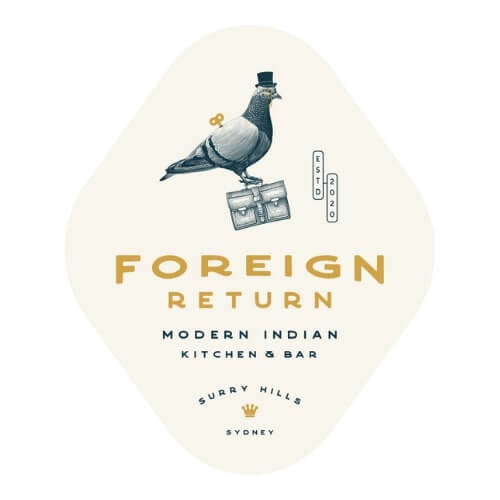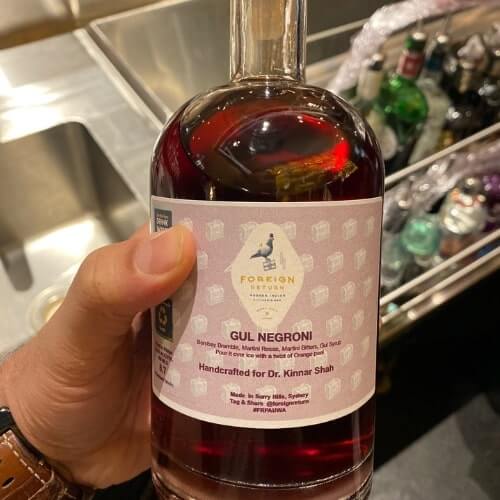Move over Curry Houses and Tandoori Diners, there’s a new trend in Indian restaurant names. Over the last two decades, as Indian restaurants have mushroomed across Sydney and Melbourne, there’s been an interesting evolution in nomenclature.
They’re no longer weighted down by having to constantly reflect their native cuisine in their names. What’s on trend instead, is to suggest the business owner’s mission. And most recently, to give a hint of their personality, if some quirky and unique names are any indication.
Indian food is much more than curries. This is an idea that’s finally becoming understood, years after our favourite chefs slogged to get the message out. (In fact, you’ve often said this yourself, right?) One Sydney restaurant put this thought directly in its name – Not Just Curries.
The Twisted Indian is doing exactly that too. As it says itself, the food the average Indian eats today is a mix of traditional and modern, desi and global, and so, being twisted seems perfectly normal. Twist – such a swish word for change, for novelty, for quirky.

Talk of quirk, and the name Don’t Tell Aunty pops up. Don’t tell aunty that their food is proudly ‘unauthentic Indian’ or not so traditional – heck, they put whiskey in their chai!
It’s the same with Ish: the food on offer here is Indian-ish, modern-ish… and all prepared with the blessings of Ish(war), if you are spiritually inclined.
And while millennials might not get Daughter-in-law, the rest of us totally do. It’s a tribute to the influence of new members in a blended family, to its food culture. (Not to be missed here is the obvious extrapolation to the benefits of immigration).
READ ALSO: A competitive cooking show puts a humble fermented rice dish on the global stage
The nod to India and its culture is loud and clear in these wonderfully descriptive and memorable names. (The Tadka is oh-so-Urban, don’t you reckon?) And nary a hint of that ubiquitous term for Indian food – curry.
Having said this though, there’s one interesting restaurant name that still features the c word in it, but you know what, it’s so esoteric that we’re completely on board with it: iCurry.
It is quite clear that the new Indian restaurant scene is just as much about the essence of the food, as it is about the target audience – food enthusiasts of all ages and backgrounds, hungry for new experiences.

The early days
In the early days (read before the 1990s), when Indian food needed to be introduced to an unaware but willing-to-experiment community of Aussie diners, the easiest options for names were as simple as ‘Flavour of’ or ‘Taste of’ India.
Come the 1990s when Indian food truly took off, and terms like ‘curry’ and ‘tandoor’ became better known, you’d pick these for your restaurant name. Ideally, you’d go with a double-word phrase: the first word would typically be Curry, Spice, Tandoori or Chilli. The second would be House, Hut, Corner, Palace, Diner or Express. The combinations and permutations gave you a large enough variety to work with.
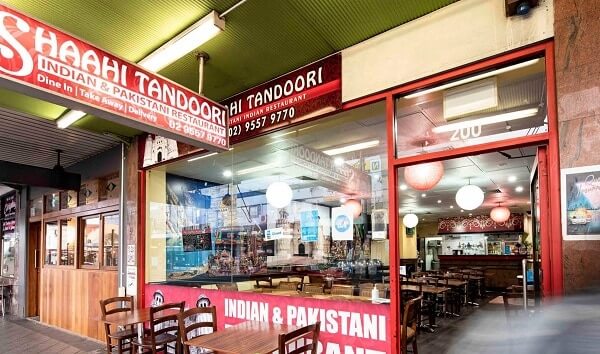
And then as the Indians themselves began to venture out to eat more frequently, they looked for more authentic versions of their cuisine than those available. And so the ‘Dhaba’ became vogue, giving us Mehrey Da Dhaba, Babe Da Dhaba, Kake Da Dhaba.
Meanwhile, mainstream Aussies became curry-savvy and picked up relevant Indian terms. When they learned that ‘masala’ as a spice mix is distinct from ‘marsala’ as fortified wine, it was safe to put that into our restaurant names. A whole new list was born: My Masala, Masala Bar and Grill, and how cool is Masala Theory?
But, eternally, it is spice that is the selling point in Indian food. And so we continue to have The Spice Room, Spice Lounge, Spice Nation, Spiced By Billu’s. And sometimes, the number of spices the restaurant probably works with – like Thousand Spices, or something more modest, like 49 Spices.
Very much like spice mixes themselves, permutations and combinations today continue to work in restaurant nomenclature, with terms like Zayka, Rasoi, Affair, Delight, Central, Tiffin in frequent use.
A tadka boom
A recent entry into this mix is the term ‘tadka’, even though it is probably a difficult word for Aussies to understand, perhaps even say. It stands for tempering, and as a final flourish, can raise the success of a dish with its multisensory experience. Alien to all other cuisines, it is basic in Indian cooking. When elite Sydney restaurant Urban Tadka burst on to the scene in 2011, its name seemed better suited to a restaurant somewhere in northern India, but that didn’t come in the way of its sustained success. Indeed, its achievements spawned a series of restaurants with similar names – Turban Tadka, Tadka, Zeera Tadka, Spicy Tadka, Tadka Boom, Tadka Hut, even Urban Tadka with an extra a at the end (prompting an indignant public rebuttal from the original owners), and bizarrely, Urban Delight, which tells you nothing about the nature of the restaurant.
And as if to counter that last one, Rustic Masala.
Whatever floats your boat…
The single ingredient restaurant name
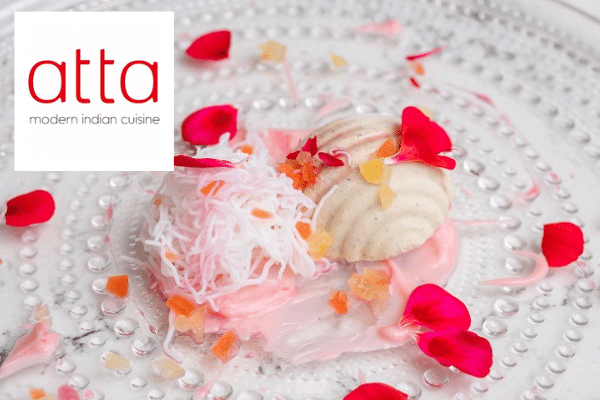
While we may boast of the number of spices that go into our dishes, sometimes the single ingredient stands out to our restaurateurs.
Such as Haldi. Tamarind. The Clove. Cumin. Bayleaf. Zaaffran. Lentil. Black Pepper.
An upmarket Melbourne restaurant takes the cake in this category, with its most non-cake-like name: Atta. Perhaps the most basic of ingredients to be found in an Indian kitchen, it is elevated here to represent a classy and elegant dining experience. Full marks!
Location-based names
Picking a restaurant name from a location in India is another easy path to follow. It might (or might not) inform the style of food that you could expect to eat, but it allows the restaurant to describe the history of the place it is named after.
So we have Delhi O’ Delhi, Delhi Rocks, Oh Calcutta, Mumbai, Last Train to Bombay, Road to Goa, Chennai and Hyderabad House.
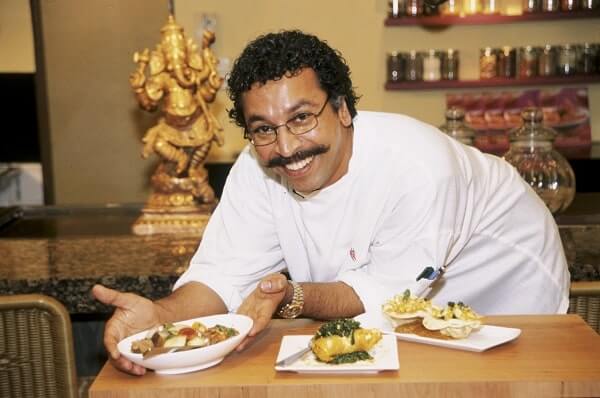
Slightly more exotic are Nilgiris, Tellicherry, Dakshin, Konkan, Mathura, Jaipur, Samarkhand, Ajmer, Malabar, Cochin, Kashi, Himalaya, Mount Everest and quite interestingly, Base Camp.
Of course, geography is not always limited to the subcontinent. Try Southall. Or Brick Lane.
Or a Sydney hotspot such as Barrangaroo Wharf, in Manjit’s Wharf.
Owner-based names
Talking of Manjit’s, another of Sydney’s leading Indian restaurants, brings us to eponymously named eateries. Billu’s, Abhi’s, Aki’s, Surjit’s, Tahira’s, Meera’s, Mrs Singh’s.
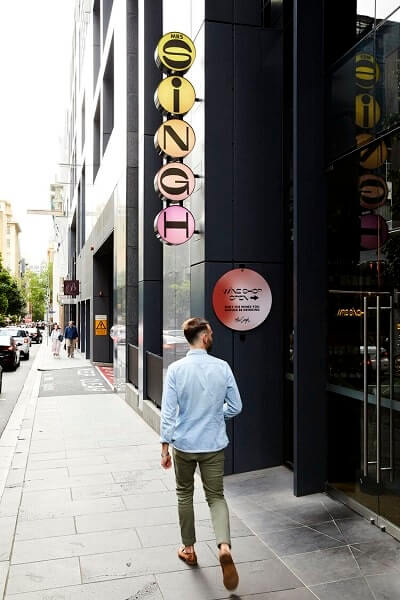
The stereotypical vs the atypical
Stereotypes, there’s a few of those. Anything to do with Taj, for example, or Om. Perhaps even Colonial. Or something based on pop culture, such as Jai Ho.
Dawat and Handi would be similarly stereotypical within the Indian community.
And yet there are others that are atypical as titles, but deeply traditional in their reference or meaning.
Feast-related, such as Bhoj, Bhojan, even Chatkaaz. Spiritual, such as Vrindavan, Govinda’s, Moksha, Kammadhenu, Nirankar. Earthy, such as Aangan, Banyan, Bhoomi. Musical, such as Sitar, Santoor. Majestic, such as Jai Hind, Samrat. Obscure, such as Chichora, Jawani.
And some that perhaps only Indian kids of the ‘70s will relate to: Foreign Return. Horn Please.
The bizarre
In most major cities of the world, you’ll find Indian restaurants named, curiously, Gaylord and Woodlands. The guess is the originals were British Raj era restaurants (write in to us if you have a better explanation).
Some names though, completely defy logic, but we’re willing to be enlightened. No. 21. Yo India. Indian Leaf. Mukka. Masti. Nashaa.

And then there are some that simply make you go, WHY? Like Bhang. Or Pagla. Or 3 Idiots. Or The Dodgy Indian – I mean, really?
And as for Delhi Belly, I do apologise, but it doesn’t appeal to me as an eatery of any sort…
READ ALSO: Isolating Indian families find relief in NGOs’ home-cooked meals





